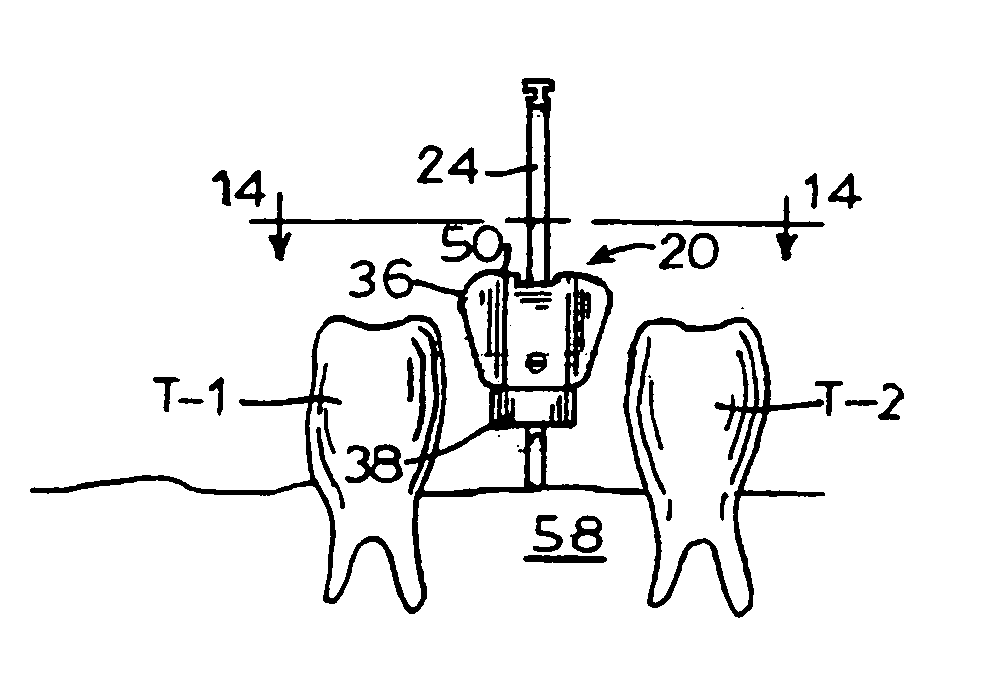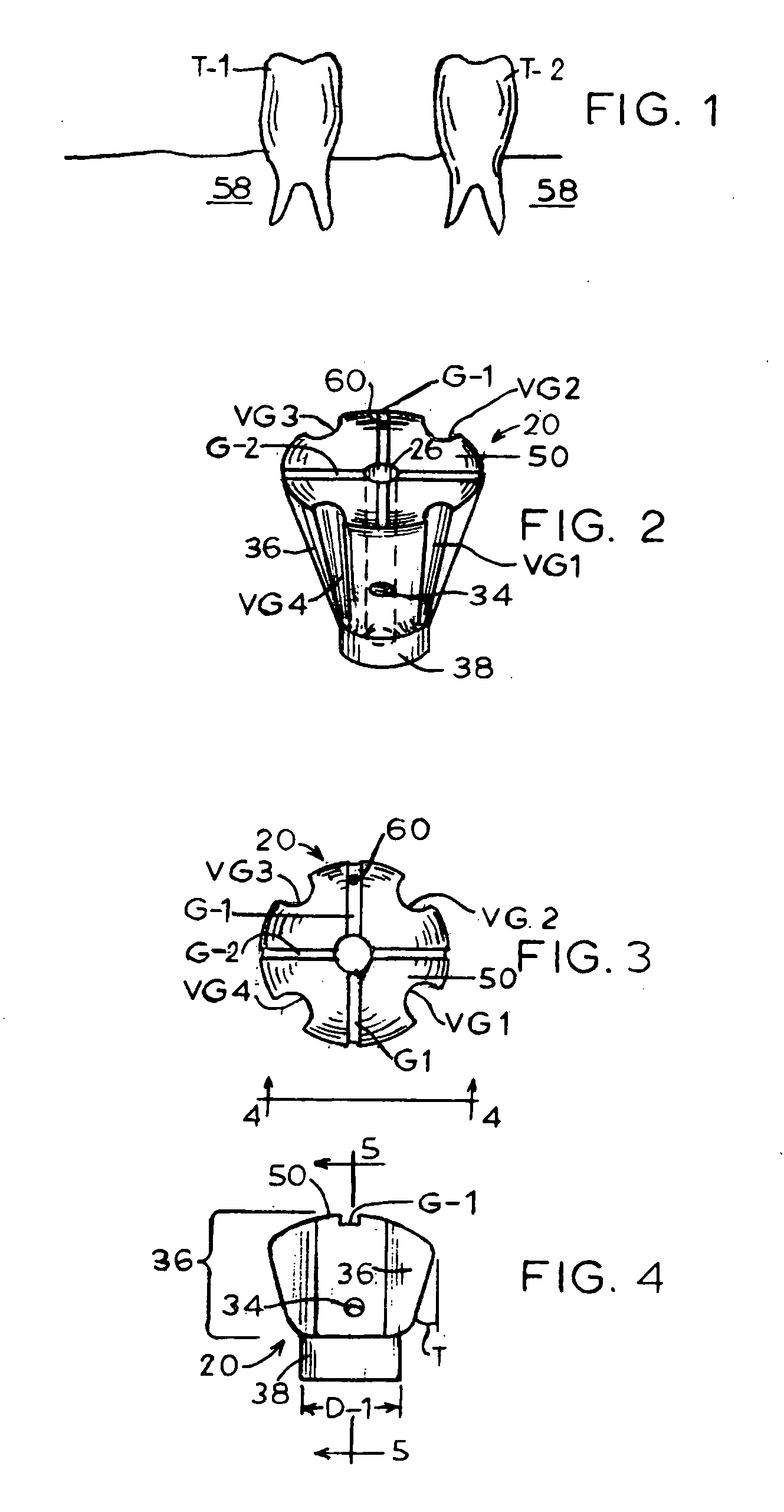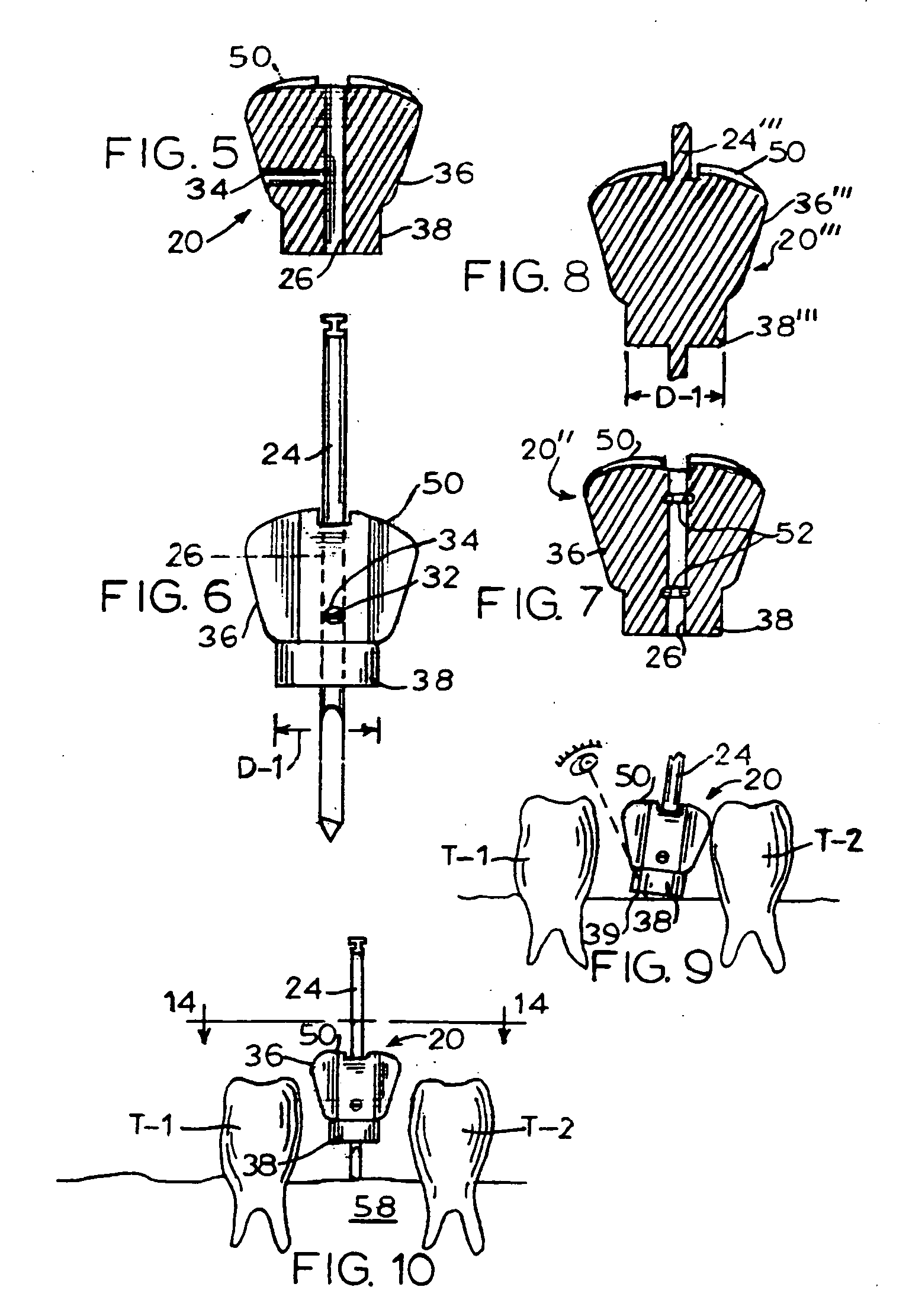Dental implant drill apparatus and method
a technology for dental implants and drills, which is applied in the field of dental implant drills and methods, can solve the problems of inability of the drill bit itself to wobble or tilt abnormally, the prior art devices for positioning dental implants lack the ability to judge the vertical and horizontal relationship of the drill bit to the boney ridge, and the prior art devices lack the ability to do this. the effect of cutting and leveling the surfa
- Summary
- Abstract
- Description
- Claims
- Application Information
AI Technical Summary
Benefits of technology
Problems solved by technology
Method used
Image
Examples
Embodiment Construction
[0041]Referring initially to the construction of FIG. 6, drill bit 24 is slidably received in central hole 26 (FIG. 5) and is held in a selected position by means of a setscrew 32 (FIG. 6) mounted in a setscrew hole 34 (FIG. 5). Alternatively, the drill bit can be held by other fastening means, such as a screw, pin, wedge, key, adhesive or by friction. Preferably, the central hole passes through the center of mass of the drill bit mount device in order to avoid wobble when the drill bit and mount rotate during drilling. Drill bit 24 is powered by an appropriate power source or drive unit not shown in the drawings.
[0042]The dental implant drill bit mount device 20 (FIG. 2) is made in various sizes and constructions. A particular size is proposed according to the size of drill, the width of jawbone 58 (FIG. 1) available for implant insertion and the amount of space between the existing teeth T-1 and T-2 (FIG. 1) between which the implant MP (FIG. 17) is to be placed. The bottom diamet...
PUM
 Login to View More
Login to View More Abstract
Description
Claims
Application Information
 Login to View More
Login to View More - R&D
- Intellectual Property
- Life Sciences
- Materials
- Tech Scout
- Unparalleled Data Quality
- Higher Quality Content
- 60% Fewer Hallucinations
Browse by: Latest US Patents, China's latest patents, Technical Efficacy Thesaurus, Application Domain, Technology Topic, Popular Technical Reports.
© 2025 PatSnap. All rights reserved.Legal|Privacy policy|Modern Slavery Act Transparency Statement|Sitemap|About US| Contact US: help@patsnap.com



